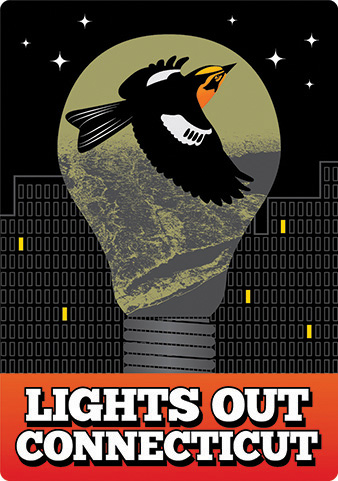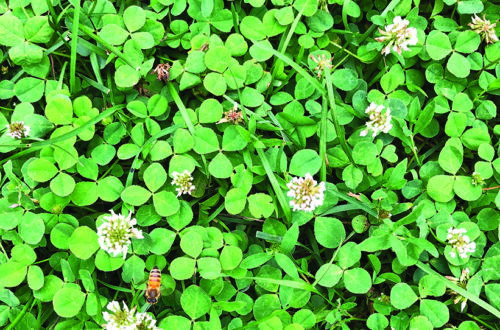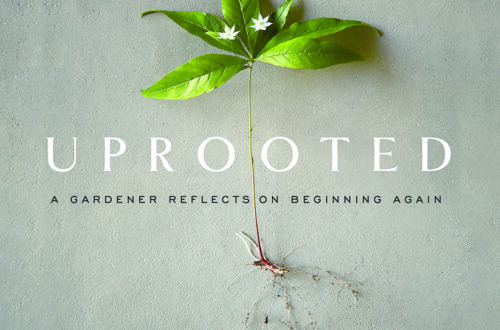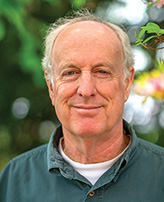By Craig Repasz
I remember learning about photosynthesis in fourth grade. We laughed at each other’s butchering of the word. Instead of rolling of the tongue “photosynthesis” turned our tongues into a tangled mess, “foto-sith-ith-ithi-ith.”
Years later in college my brain was synthesized into a tangled mess trying to remember the molecular structure of chlorophyll, how photons could excite electrons, light reactions, dark reactions, conversion of CO2 into sugar, the pigments in the plants’ leaves that capture light at all wavelengths so that the plants’ use of sunlight is as efficient as possible. The point is sunlight is crucial to plants and to all life on earth. So, more is better, right?
In one of the most man-manipulated environments for plants, hydroponic greenhouses, the concept of night and day is well understood. Photoperiodism refers to how plants respond to the lengths of light and dark periods, significantly influencing their growth patterns.
This fascinating interplay of light duration can dictate everything from flowering times to overall yield, making it an essential consideration for any hydroponic gardener.
Too little light and the plant fails to grow to its maximum potential, too much light and the plant is stressed and fails to produce fruit, vegetables, or flowers.
However, when it comes to our gardens, our pollinator beds and restored natural landscapes, Artificial Light at Night (ALAN) from surrounding homes, businesses, parking lots and streetlamps is overlooked and is a major stressor of our plants and their pollinators. The problem is bad and getting worse. Do the hydroponic gardeners know something that we don’t?
The Light Pollution Problem
According to a Dark Sky International report in 2016 more than 80 percent of the world’s population lives under light polluted skies. Light pollution is the human-made alteration of the outdoor light levels that occur naturally.
The United States and Europe have it even worse, with 99 percent of their denizens experiencing skyglow at night.
Satellite pictures of the earth show that nighttime darkness does not exist in most of Connecticut. A Citizen Science project from the National Science Foundation published in 2023, showed that the sky brightness increased by seven to 10% per year (and 9.6% on average) over a 12-year period. This increasing light pollution has a profound impact on wildlife, and human health and safety.
So why is light pollution increasing? Humans are hard wired to fear the dark. So, the more light the safer we are, right? Well, no, in fact studies have shown that there is no clear scientific evidence that increased outdoor lighting deters crime.
In fact, studies done by the home-security industry across several metropolitan areas show that most crimes occur between noon and 7:00 pm, not later at night. Nevertheless, lighting at night makes us feel safer, which is important.
The installation of new brighter LEDs is driving the problem. Furthermore there has been a proliferation of accent lighting around our homes. As a result, our stars are disappearing, our health is being harmed, and our natural environments are being impacted, including our beloved gardens.
Our understanding of the harmful impacts of light pollution (ALAN) is expanding due to increased coverage in the media and the increased research into the issue. Some main points of our current understanding are:
• Light pollution can affect nocturnal and diurnal animal migrants by disrupting their movements through collisions with lit structures, by altering migration stopover sites and the aerial connectivity of the night sky, and through exposure to sky glow and altered phenology.
• Moths are one group of nocturnal insects that are in significant decline. Their disappearance is also problematic because they play a key role in food webs and in the pollination of plants. A new study provides experimental evidence for the fragmentation of landscapes by streetlights and demonstrate that light pollution affects movement patterns of moths beyond what was previously assumed, potentially affecting their reproductive success and hampering a vital ecosystem service. not only in the cone of light from streetlamps, but also outside the illuminated area. This change in behavior can keep moths from feeding and breeding where entire generations could be lost. Scientists have warned about an insect Armageddon.
• The icon of our summer nights, the firefly is disappearing from our yards and fields due to a combination of light pollution, pesticides and habitat loss. The light display made by these insects are a mating behavior. The light signals cannot be seen by potential mates. Also, the fireflies are confused by the light pollution and not being able to sense that it is nighttime.
• Recent studies show that light pollution increases our risk for endocrine based cancers, cause sleep disorders, leads to high cholesterol and triglycerides, weight issues, obesity, and Type 2 diabetes.
Most organisms, including mammals, have developed an endogenous circadian timing system under the earth’s natural 24‐hour rhythm that is adapted to the regular alternation of light and dark phases. Thus, it seems likely that changing these conditions will impact physiology. Life on earth has evolved to depend on the dark for important life cycles.
Light Pollution & Plants
Gardeners are more concerned with sunlight. Are the plots and beds getting enough? Is there too much shade? The nighttime and darkness were something that we never needed to worry about. With the setting sun darkness was guaranteed. Who ever thought about photoperiods?
Take a nighttime drive through our states and see the levels of light pollution for yourself. We see light trespassing from a driveway into their neighbor’s yard. We see people have installed lights to line their walkways or shine into garden beds or a wooded border. Or they have wrapped trees in string lighting to induce a diaphanous glow in their yard.
This over-lighting can affect the plants flowering, leaf budding, seed dispersal and delay the autumn leaf fall, a plant’s natural process of preparing for colder temperatures. The plants immune/defense systems have been shown to be impaired by excessive light.
The plants over-photosynthesize thereby creating more stress on the plant. Furthermore, these over lit areas can be a deterrent for nighttime pollinators.
Research on the impact of excess light is sparse. However, excess light has been shown to change the species composition of grassland habitats. Experiments have shown that in some species, leaf development was accelerated by up to 20 days by light pollution. Other findings showed that ALAN caused photoinhibition and oxidative stress, which can reduce the pigment contents. And, light can induce the opening of stoma in a plant’s leaves leading to water loss and infiltration of pollution.
Our Future is Bright
Back when I was in fourth grade struggling with the word “photosynthesis” I could go out at night and see the Milky Way and an abundance of moths on the back porch. It was so easy to find open natural space … that was dark at night.
If the current trend of light pollution continues at its current rate the night sky with its planets and stars will be lost to us, there could be extinctions of birds, amphibians and insects. We will find ourselves stressed and unhealthy. We must think of the dark as habitat that is important for all.
There is movement to restore habitat by going native. We select our plantings to build a natural sustainable habitat that will strengthen the ecosystems around us. The term rewilding is sometimes used and brings us away from the manipulated environment. These efforts are in our yards at home, our schools, our town parks and land trust properties. People find refuge by visiting these places to sit among shrubs, trees, and pollinators. We smell the fragrance of the plants. We are calmed by the birds singing. But let’s not overlook these special places at night.
How to Bring Back the Dark
The solution to bring back the dark can be simple: shut off the lights. If you need light put it only where it is needed. Keep the brightness as low as possible. Put lights on timers and motion sensors. Use amber colored lights instead of white lights. Support organizations like Dark Sky International (https://darksky.org) and Lights Out Connecticut (https://
www.lightsoutct.org).
Encourage your town to adopt the Model Outdoor Lighting Regulations: www.lightsoutct.org/model-municipal-lighting-policy-for-connecticut. Talk to your friends and neighbors. Many people still believe that light pollution is somehow needed.
Craig Repasz is president of the Friends of Stewart B. McKinney National Wildlife Reserve, an organization devoted to supporting this important refuge. He was president of the New Haven Bird Club and the conservation chair of the Connecticut Ornithological Association. He has been the volunteer coordinator for the Connecticut Bird Atlas for six years. He enjoys backpacking and conducts Mountain Birdwatch surveys for the Vermont Center of Ecostudies, focusing on the Bicknell’s Thrush and other high-elevation species.





